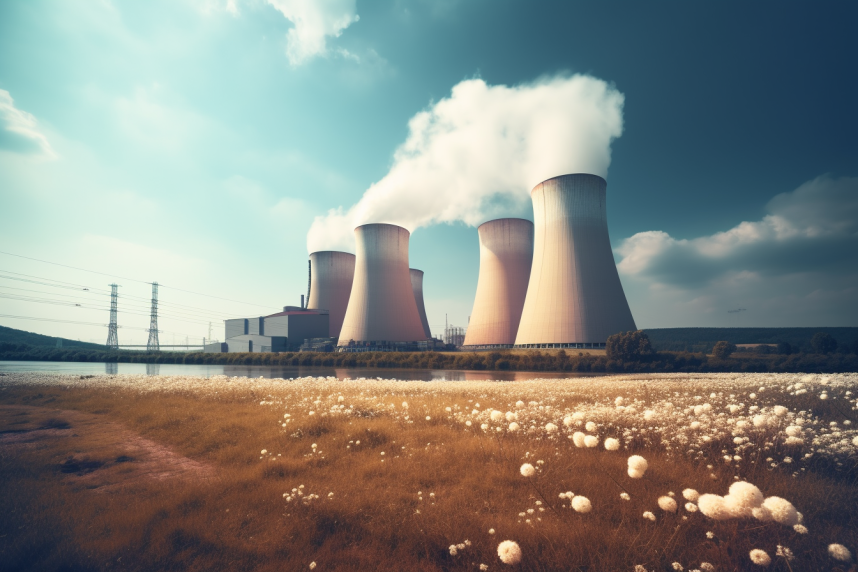
Renewable Energy vs. Nuclear: Which is a More Viable Option?
We are reader-supported. When you buy through links on our site, we may earn affiliate commission.
As concerns about the global impacts of climate change grow, the need for clean energy has become increasingly clear. The current rates of fossil fuel consumption and greenhouse gas emissions must dramatically reduce if we hope to minimize the effects of climate change. Thankfully, there are several options for generating electricity without pumping carbon dioxide into the atmosphere — and many are already in use. Let’s look at nuclear energy vs. renewable energy as a whole.
Nuclear power plants and renewable energy generators like wind farms and hydroelectric dams currently provide a combined 19% of the power consumed in the United States. That number is even higher in other countries. Expanding nuclear and renewable energy programs can combat climate change by reducing reliance on fossil fuels.
But between renewable energy and nuclear, which is the more viable option? Let’s compare these two types of energy generation below.
Nuclear Power and High-Efficiency Power Generation
People have used nuclear power to provide carbon-free electricity for decades, and today it accounts for approximately 8% of U.S. power consumption. Nuclear power plants generate electricity by splitting atoms to release the energy inside. That power then heats the water in the reactor, which in turn releases steam that spins a turbine connected to a generator.
This process uses uranium as fuel. Though more abundant than once thought, uranium is still a finite resource, which is why nuclear power is non-renewable. Because nuclear plants can produce plenty of energy without releasing carbon dioxide, however, they are considered sustainable.
Nuclear power comes with multiple benefits. The most significant advantage of nuclear relates to its extremely high efficiency. In 2018, nuclear power had a capacity factor of 92.6%, which means these power plants were capable of operating at maximum capacity more than 92% of the year. With such a high capacity factor, nuclear plants offer higher reliability than natural gas, coal, hydropower, wind and solar. Nuclear power plants are also low maintenance, designed to operate for long periods without refueling.
Although nuclear power is highly efficient, it also comes with downsides. For example, radioactive nuclear waste must be securely stored for a long time after use to prevent harm to the environment and surrounding communities. Nuclear power also tends to cost more to generate than energy from renewables.
Renewable Energy and the Future of Power
In comparison to nuclear, renewable energy generators capture power using resources that naturally replenish over time. This factor means renewable generators never permanently run out of fuel. Many types of renewable energy exist. Some of the most common include:
- Solar
- Wind
- Geothermal
- Hydro
- Biomass
Whether energy generation comes from a strong gust of wind, the heat of the sun or the relentless flow of a river, the resources used to generate renewable power are never truly exhausted. Even better, the operation of a renewable power plant requires no fuel mining and generates no hazardous waste. As renewable sources like solar become more affordable and efficient, we may find that investing in them becomes more economically viable than keeping aging nuclear plants running.
Some concerns about renewable energy still linger, however. Natural lulls in wind and sun mean that renewable plants have lower capacity factors than nuclear sources. As a result, people need to build more plants to generate the same amount of electricity. Some communities also worry about the impacts hydroelectric dams have on their aquatic ecosystems.
Additional Considerations
As energy sources, both nuclear reactors and renewables can significantly reduce greenhouse gas emissions related to fossil fuel reliance and generate reliable electricity for many more years. Nuclear and renewable power both offer viable alternatives to non-renewable and non-sustainable sources like coal and natural gas.
However, there are additional considerations to take into account when comparing nuclear and renewable power. For example, energy privatization and deregulation may impact the success of these options, removing some roadblocks and creating others.
Some people have also raised concerns about whether countries may use an expansion of nuclear power to shield atomic weapons programs from international scrutiny. Although this has more to do with geopolitics than energy generation, it’s still something to keep in mind.
Renewable Energy vs. Nuclear Energy
Ultimately, both nuclear power and renewable energy give us valuable tools for combating climate change on a short- and long-term basis. With pros and cons to each, it’s up to you to decide which option for clean energy you prefer. Alternatively, you may believe a combination of nuclear and renewable energy would be most effective for generating green electricity.
More research in the future could illuminate the upsides of renewables versus nuclear reactors. Additionally, the practical experiences of countries and states that are leading the transition to clean energy may show which path is most economically viable. As we learn more about producing clean electricity, 100% renewable energy is looking more feasible every day.
Share on
Like what you read? Join other Environment.co readers!
Get the latest updates on our planet by subscribing to the Environment.co newsletter!
About the author

Jane Marsh
Starting from an early age, Jane Marsh loved all animals and became a budding environmentalist. Now, Jane works as the Editor-in-Chief of Environment.co where she covers topics related to climate policy, renewable energy, the food industry, and more.





